Do you sometimes wonder what your furry friend is trying to tell you when he/she does something in particular? Like, tail high in the air, arched back with a yawn, standing still, swiveling ears, etc. Is there a reason behind all these body gestures, or are cats just playing with humans for centuries? Well, similar to human beings, cats show their inner states through their body language. They seek attention, but they don’t want you to smother them. They will engage you into playing, but out of nowhere, they might scratch you up. It’s all about how much you understand your cat.
Cats can be very subtle when it comes to their body language. In other words, you can never be accurate with your deduction regarding your cat’s body language. Observing their eyes, tails, ears, and body will allow you to gain more insights into your cat’s psychology if you want to explore how to understand cats.
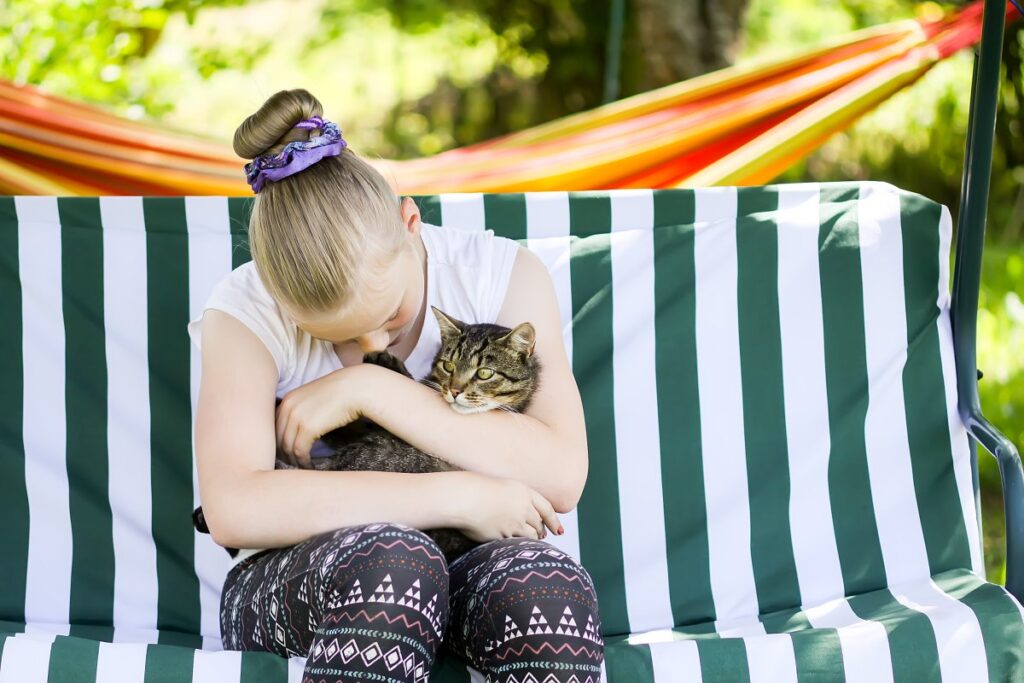
If you have been thinking till now that all these signs of a cat’s body language don’t mean much, then you are pretty wrong. Cats communicate with other animals and humans through different mediums, but body gestures are the most common. It’s up to you to interpret and understand your cat’s bizarre body language, vocalizations, and behavior. This might sound a bit daunting at first, but after giving your cat some quality time and attention, you will be able to understand what your cat is trying to communicate about his/her needs, and feelings in certain moments.
Quick Navigation
- Is It Important to Know How to Read Cat’s Body Language?
- Physicalizations
- Tail high in the air (Relaxed)
- Tail high in the air (Tensed)
- Tail high in the air (Quivering)
- Low, tucked tail
- Tail flicking back and forth
- Arched back (Yawn)
- Arched back (Bristled fur)
- Facing head-on
- Facing away
- Standing sideways
- Crouched (Alert)
- Crouched (Wiggling)
- Standing still
- Rolling around
- Stretching, belly up
- Swiveling ears
- Forward & relaxed ears
- Tall & erect ears
- Flattened ears
- Flattened whiskers
- Dilated pupils
- Steady & slow blinks
- Tiny pupils
- Head rubbing
- Sniffing face
- Kneading
- Vocalizations
- Be Aware of the Venus Cat Trap
Is It Important to Know How to Read Cat’s Body Language?
Generally, keeping a cat as a pet and taking care of it seems pretty simple. If your cat makes a sound, give him/her food. If she rubs her head on your leg or exposes belly, pets him/her, and if nothing seems to work, just give your cat some toys; it’s all good. Unfortunately, it’s not that simple. It’s not that hard too, but you need to give your cat some valuable time of yours to understand his/her behavior.
Cats use lots of different body gestures through which they try to give us some kind of information regarding their health, feelings, or simply hunger, or it could be something else. But why it’s important to know how to read your cat’s body language? Well, it’s simple, to communicate and to strengthen your bond with your cat. Cats don’t speak the same language as us humans, so they express through vocalizations and body language. But why do we need to focus on our cat’s body language specifically?
If you have a shy cat, it’s quite crucial for you to understand your cat’s body language. If you can pinpoint what exactly your cat wants by just understanding his/her way of walk, or the way he/she is sitting in a corner, you can change the way you interact with him/her entirely. Body orientations are very crucial to consider when understanding a cat’s sign language. People often interact with cats and get scratched up, then blame the cat for their mean behavior. Well, you need to consider the cat’s perspective too. You should understand how the cat might have perceived the gesture. Your intentions might not matter all the time when it comes to cats. They are mostly judging you on your actions, and that’s not their fault.
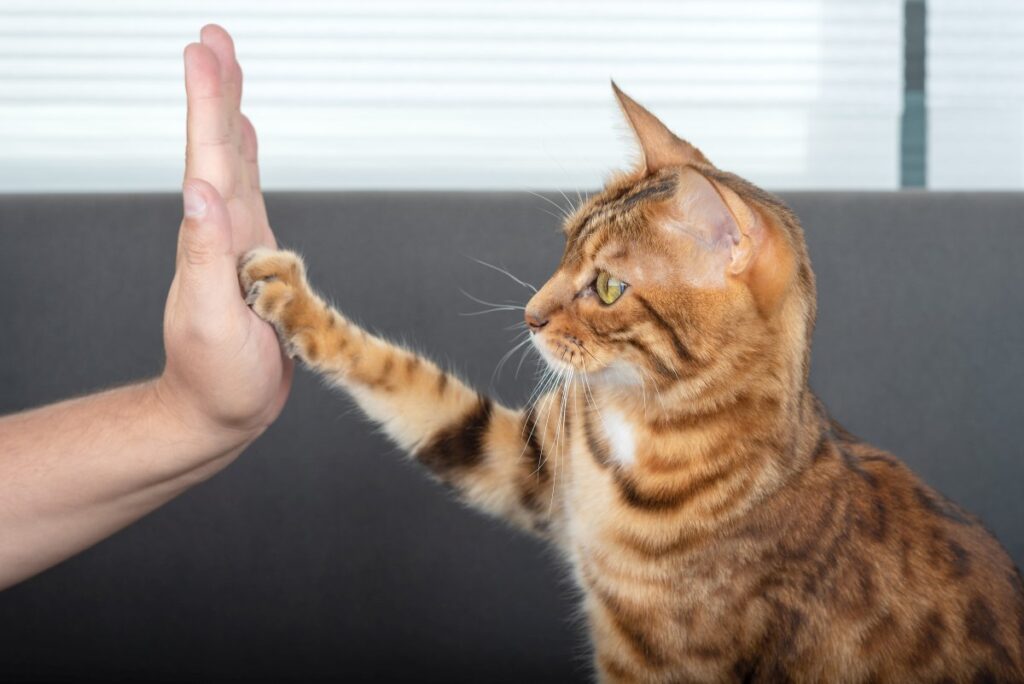
We will discuss different cat body languages, but it is important to note the context in which your cat is acting for a specific situation before we get into that. Considering the situation for your cat is very crucial for their comfort. A dark, confined environment might make them feel distressed and affect their anxiety. Cats prefer wide and open spaces so that they know what’s going on in their environment. That is the reason why cats usually settle in a high open place. However, if your cat is familiar with its environment and the presence of others, then you can assume they are comfortable.
When engaging or interacting with a cat, taking in the big picture is essential. Look around, remember the last hour how your cat spent, and then analyze the situation of the room from your cat’s perspective. You won’t always be right with your analysis, but you won’t make the same mistakes over and over. And if you are not sure about your cat’s comfortability, then noticing your cat’s individual parts of the body language can help you attain a better understanding. Simply put the pieces together and figure out the best action plan to carry out in certain situations, and sometimes doing nothing is the best option preferred by your cat.
Dr. Marci Koski, a certified consultant of feline behavior and training advises, “Always factoring in context when considering a cat’s behavior. Context includes – but isn’t limited to – where your cat is, who else is around, when your cat last ate, and what activities are happening in close proximity.” Dr. Marci Koski further adds, “Understanding the context is the first step in interpreting your cat’s body language.”
All You Need to Know About Cat Sign Language
Physicalizations
Cats show a lot of energy when they want to play. It could either be with you or some of their favorite toys. They probably will stalk you if they wish to interact with you or engage you in physical activity. Or sometimes, they will simply ignore you and not pay attention. Well, which expression you shall exactly interpret depends on the list below. It will give you clarity on some of the common behaviors that can be observed in various cats. All these simple and small details will help you understand your cat and create a special bond with him/her.
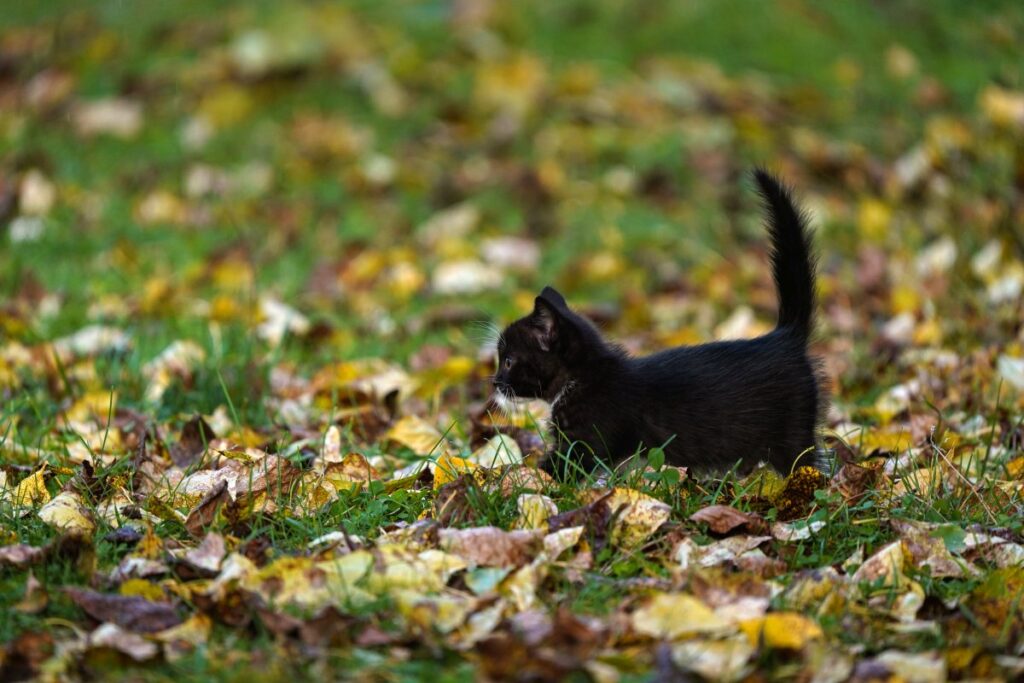
1. Tail high in the air (Relaxed)
A cat with a tail high in the air simply says that he/she is happy and would love to play. You can engage with your cat in an energetic activity or let your cat play with his/her toys. And if you wish to give her a treat… well, why would he/she ever say no to that?
2. Tail high in the air (Tensed)
If a cat has a tail high in the air, it doesn’t always mean that he/she wants to play or engage with another human or animal. When cats are frightened or cautious in some other animal’s or human’s presence, they will have their tail high in the air. This indicates that they see a potential threat in that situation and are ready to fight. Often, cats will have bristled fur in this scenario.
3. Tail high in the air (Quivering)
This behavior is not that common in every cat. It is mostly observed in cats that are unspayed or unneutered. As per the Humane Society, whenever a cat quivers his/her tail high in the air, it is usually the indication that your kitty is excited and will spray (urinate) to prove it.
4. Low, tucked tail
Common behavior in cats’ body language is that they try to shrink themselves whenever they are afraid or feel sad. They will fold up or become tinier targets and express that they don’t feel comfortable in the current situation.
5. Tail flicking back and forth
There is something peculiar about a cat flicking his/her tail back and forth. It catches your attention and starts building up curiosity. You want to know what’s going on in your cat’s little head but keep in mind that a cat flicks her tail when he/she is agitated. It’s best to leave your cat alone in this situation. In some other context, it could mean that your cat is almost thinking.
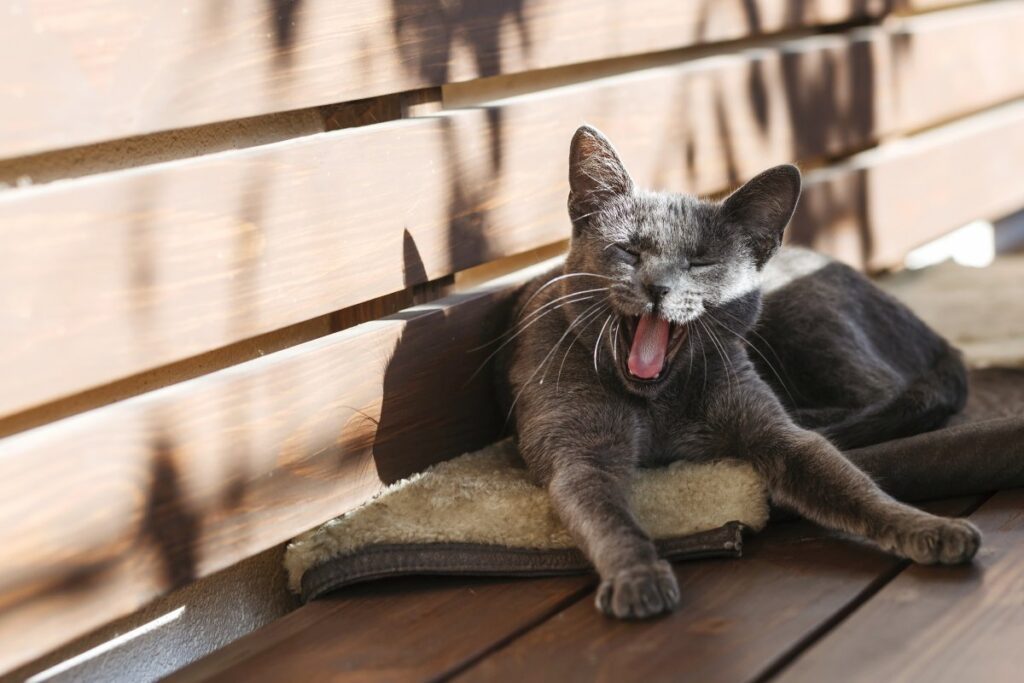
6. Arched back (Yawn)
This is just an indication of whether your cat has just woken up or going to take a nap. It’s a nice healthy stretch for your cat.
7. Arched back (Bristled fur)
On the contrary of feeling afraid, if your cats feel threatened, they try to make themselves look bigger. That’s their way of coping up with a threatening situation. Arched back with bristling fur indicates your cat is on alert and is also a sign of aggression.
8. Facing head-on
Canines face head-on to their prey as a sign of aggression. However, felines face head-on for very different reasons. This way, cats express their feeling of self-assurance and positivity.
9. Facing away
You might have noticed that your cat comes into your room, looks at you, and then just sits facing away from you. Doesn’t that feel bad? Doesn’t it feel like an insult? Well, you should be feeling quite the opposite of that. Your cat isn’t ignoring you this way; he/she simply trust you enough to let his/her guards down and face away from you without any hesitation. Although, this doesn’t mean that you should startle your cat and start a snuggle session. He/she simply feels comfortable in your presence to chill by showing you their blind spot.
10. Standing sideways
Cats usually show this kind of behavior. They would stand sideways to you or any other person/animal. Well, this is a sign when they are preparing to run if needed. In other words, they’re fearful of their current situation.
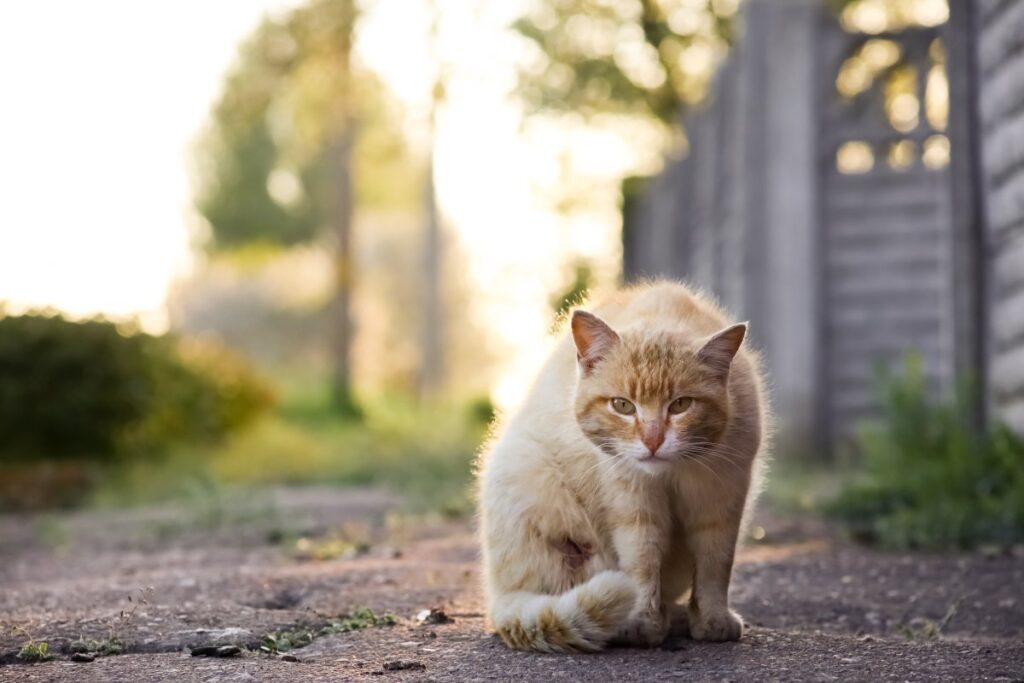
11. Crouched (Alert)
Every time your cat crouches, he/she has the same intention, to pounce. Although, it can be noticed if your cat is on alert mode. This usually means that they are anxious.
12. Crouched (Wiggling)
Same as the previous one, a cat is preparing to pounce if he/she is wiggling butt while crouching. Although, when your cat pounces in this manner, it’s always a delight to watch.
13. Standing still
Whenever a cat freezes in the middle of a walk or a room, that means the cat is observing and processing an uncomfortable situation.
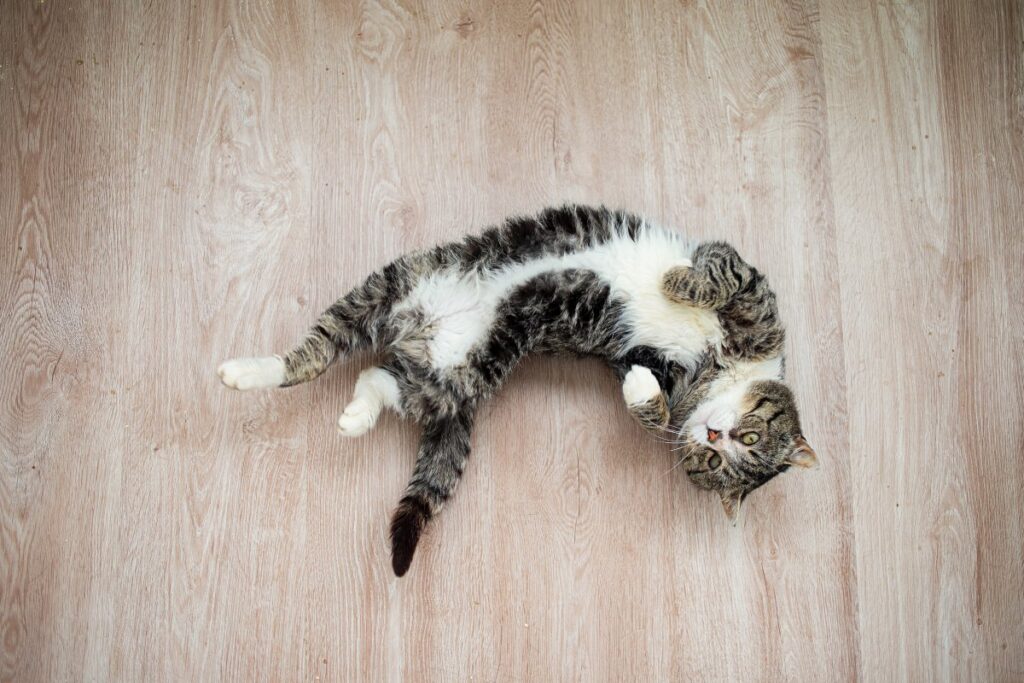
14. Rolling around
Your cat might roll in front of you, lay on the ground with its belly up, and look at you in the eye, saying, “Play with me!”. Well, just play with your cat… don’t rub his/her belly. They probably won’t like that.
15. Stretching, belly up
Just like a cat facing away from you is a sign of trust, showing their belly to you is also a sign of trust. With stretching, the belly-up cat feels relaxed and totally secured around you. But again, don’t try to rub your cat’s belly in this situation. He/she will try to bite you or scratch you. Go on, try it!
16. Swiveling ears
With swiveling ears, your cat is examining the whole room and taking it all in. Whether to get comfortable or to simply walk away.
17. Forward & relaxed ears
A simple expression of the cat’s body language that shows your cat feeling relaxed.
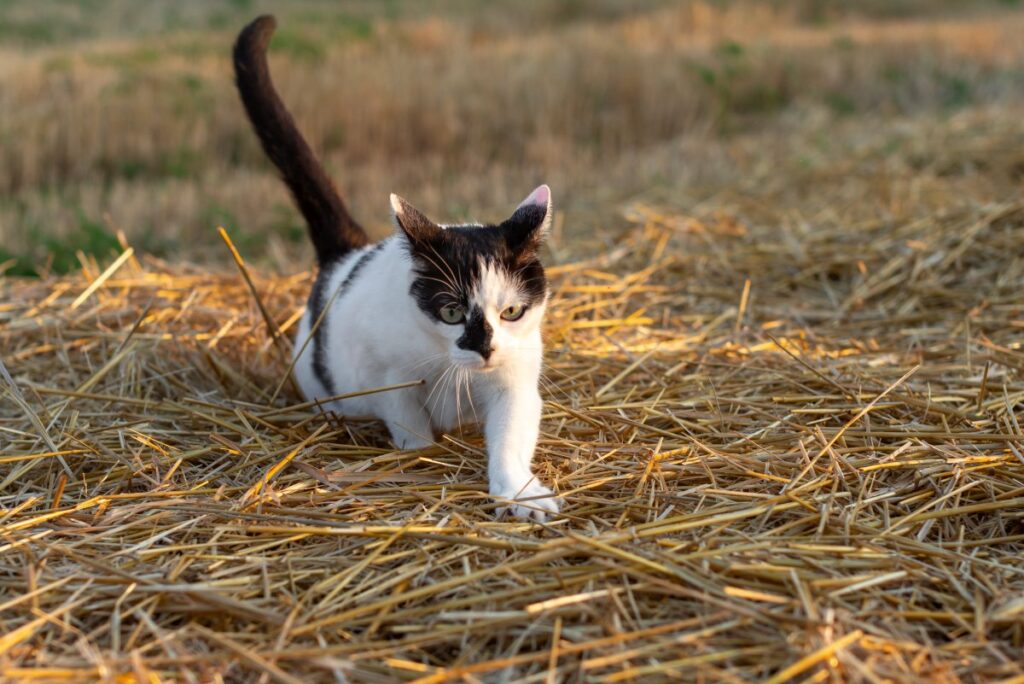
18. Tall & erect ears
Cat is on high alert! “What was that noise?”
19. Flattened ears
Flattened ears are an indication of your not enjoying that particular time at all. She might bolt as she is probably scared or mad.
20. Flattened whiskers
Observing the state of your cat’s whiskers is not that easy to do, for obvious reasons. However, if you wish to take more signs into consideration other than the cat’s posture, ears, eyes, and tail, then whiskers can give you a little bit of hint. And there are not many different variations of how a cat keeps his/her whiskers, but if they are flattened or close to their face, it is a sign of fear. And if your cat feels confident, then it will push its whiskers away from its face.
21. Dilated pupils
Focusing on pupils might seem very weird at first, but eyes do say some specifics about the cat’s body language. Dilated pupils simply mean that your cat is keyed up. It could be from either fear, excitement, or anger. However, other aspects of body language also should be put into consideration when observing pupils. They could change the course of interpreting the cat’s body language.
22. Steady & slow blinks
When it comes to cats, eyes aren’t the door to your cat’s soul. Other parts of their body are way more communicative than their eyes. But they still do say some things through their eyes. Like, if your cat gives you a steady gaze with slow blinks, this shows that your cat is comfortable or maybe wants to sleep. The best way to respond to this body gesture is to do the same, blink slowly to them.
23. Tiny pupils
Tiny pupils narrow into slits are an expression of aggression. A cat could be alarmed when they have tiny pupils, or it could be due to high brightness.
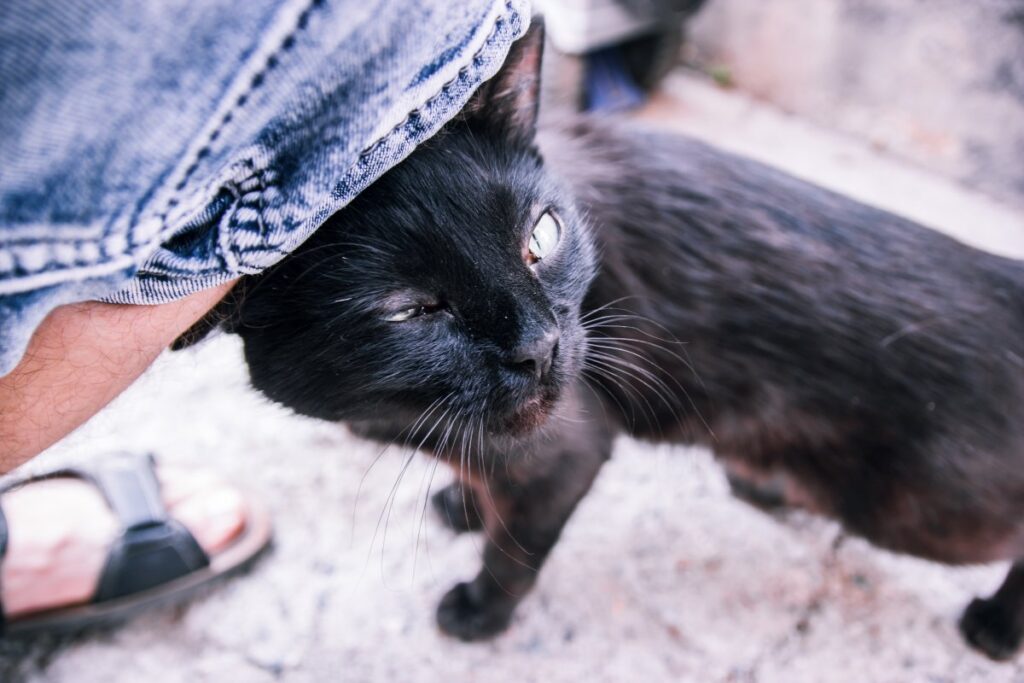
24. Head rubbing
We all feel good when our cats rub their heads against our legs or body. It is pretty adorable, and the reason is much cuter than the action itself. Cats rub their hands against things to mark their territory.
25. Sniffing face
Have you ever seen your cat with a face like eyes squinted, head lifted, and mouth hanging open? Well, in this case, your cat is smelling stuff. Cats have something called Jacobson’s Organ. This is located on the top of the inside of their mouth, right behind the top teeth, and is connected with their nasal passage. Jacobson’s Organ allows cats to better smell their environment. Cat’s “sniffling face” means that they are kind of conducting their own investigation.
26. Kneading
Kneading is when a cat scrunches their paws into fists. This is a habit that is developed by a cat in its early stages of life. This is a mechanism that kittens use to increase the milk flow during the period of nursing. And when cats use this mechanism after the nursing period, it shows that they are thrilled.
Vocalizations
Understanding the vocalizations of your cat is quite important but not as crucial as physicalizations. However, that doesn’t mean that you should totally ignore them. Well, the key to reading your cat’s vocalization is, again, context. In case of kneading and purring, your cat is probably relaxed. If your cat is sluggish and purring, then she probably is sick. But how to understand both aspects entirely? We will be discussing this matter in a bit more detail.
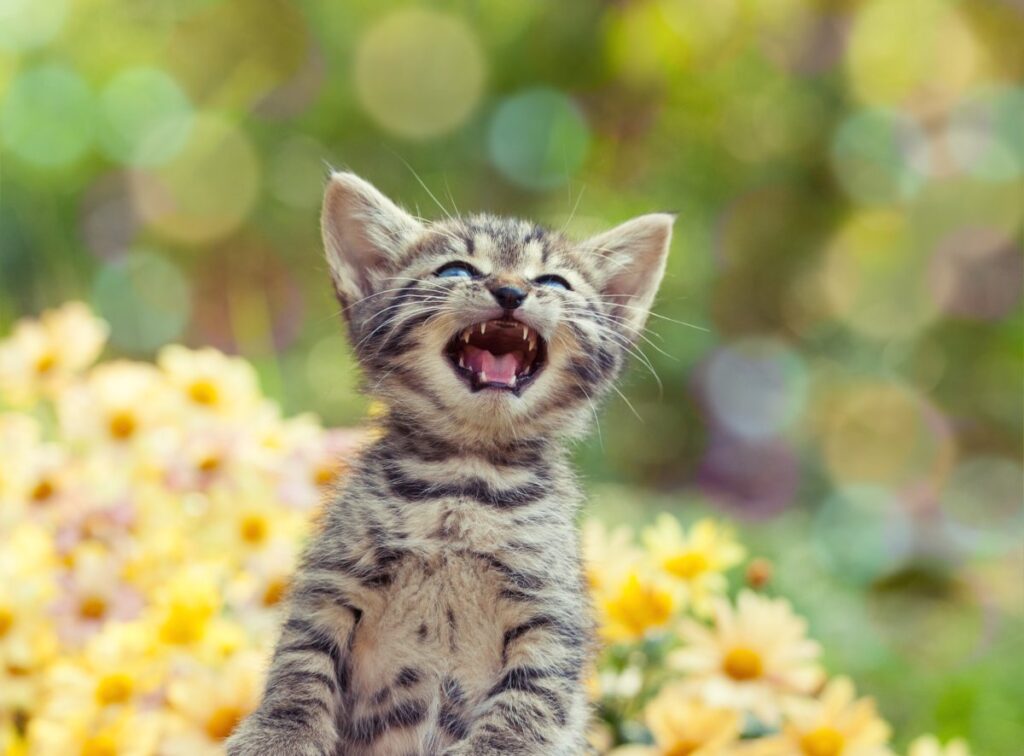
1. Meow
Meow can have so many interpretations in different situations. In the case of a meow, understanding the context is necessary. You can’t simply deduce anything by just focusing on “meow”. That is not advisable or good for your cat at all. Look at your cat’s body language for a better understanding. However, in most cases, the sound of meow is associated with a happy or a positive expression.
2. Continuous Meow
Continuous meowing is something that you should look out for. It’s not common, even for highly expressive cats, to constantly meow. If you note constant meowing from your cat, immediately take it to your vet.
3. Purr
Purr has a bit similar interpretation to that of a meow. It is often associated with self-soothing, and it could also mean that your cat is utterly pleased. However, if a lethargic cat routinely purrs, then consulting with the vet is better.
4. Yowl
A cat yowls when he/she is feeling depressed or sad. It is a low sad noise, that expresses his/her feeling of being upset and unable to do anything. It’s not necessary to take your cat to the vet in this case, but interact with your cat or treat your cat with his/her favorite food.
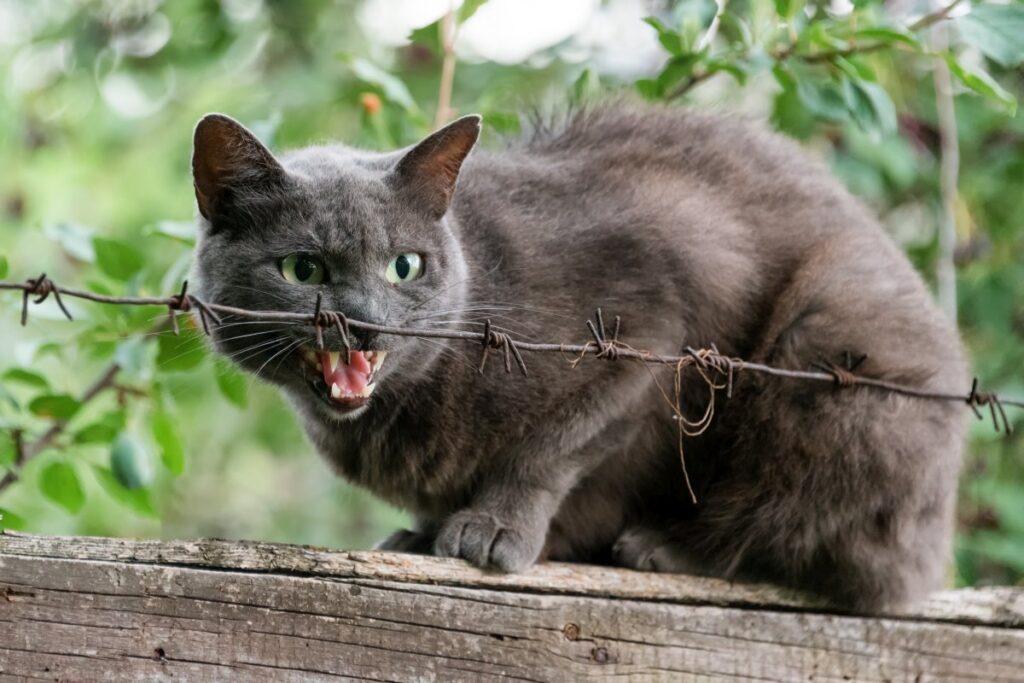
5. Growl
Growling is a part of every cat animal. Like, tiger, lion, etc., but it is most rare in a cat. Cats usually don’t growl, but when someone exploits their space or mess up their favorite toys, they will growl, and it’s better to give your cat its space when he/she is growling.
6. Hiss
When things get a bit out of control while playing, cats usually make the sound of hiss. It is a straightforward expression of anger. It is better to consider it at the start before things get out of your control too.
Be Aware of the Venus Cat Trap
Even if you know every cat’s body posture through which it communicates, you still have to be prepared for any unexpected action or reaction from them. Let’s look at an example, The Venus Cat Trap. As it says in the name, it’s a trap.
There are two aspects to a cat showing its belly to you. One is trusting in you and an expression of comfortability. They might gaze at you while showing their belly, which might make you go on and rub their belly. But that would be a mistake. If a cat expresses her comfort, that doesn’t necessarily mean that he/she wants to have a snuggle session. It could mean that the cat just wants to lie down and rest.
Another aspect to your cat showing belly would be that he/she is ready to fight off an aggressor. This position allows their claws to be defensively active. At first, it might seem cute and adorable, but again, don’t rub them. It is not an invitation for a belly rub.
Final Word
Every human is different from any other human, and all cats are different as well. You will be better equipped to control and handle a certain situation if you know your cat’s different habits. Not every cat responds the same to snuggling, rubbing, playing, etc. Their perspectives matter if you wish to connect with your cat on a whole other level. Understand their complexity and their simplicity, their behavior patterns, and their routines. Everything is telling you something new about your cat’s body language.
The best way to understand the context of your cat’s body language is to spend quality time with them. You can better understand the cat’s body posture perspectives if you know about your cat’s personality.

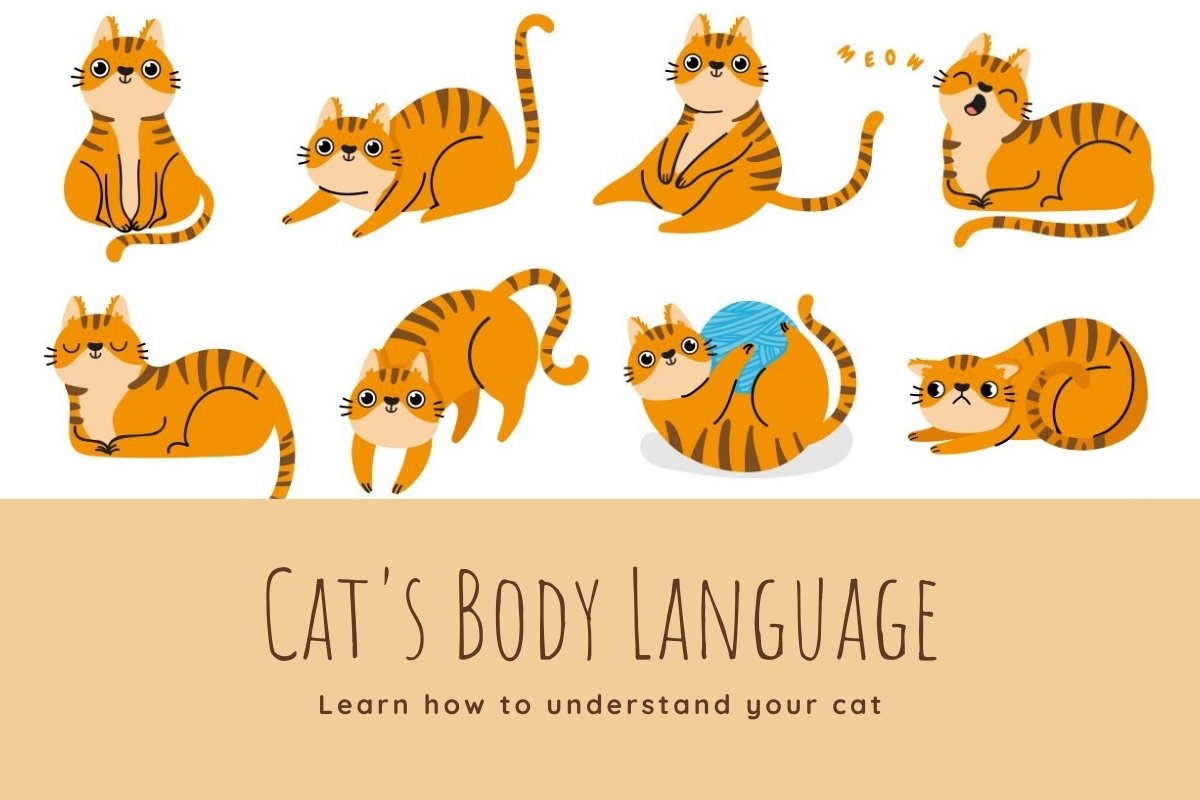
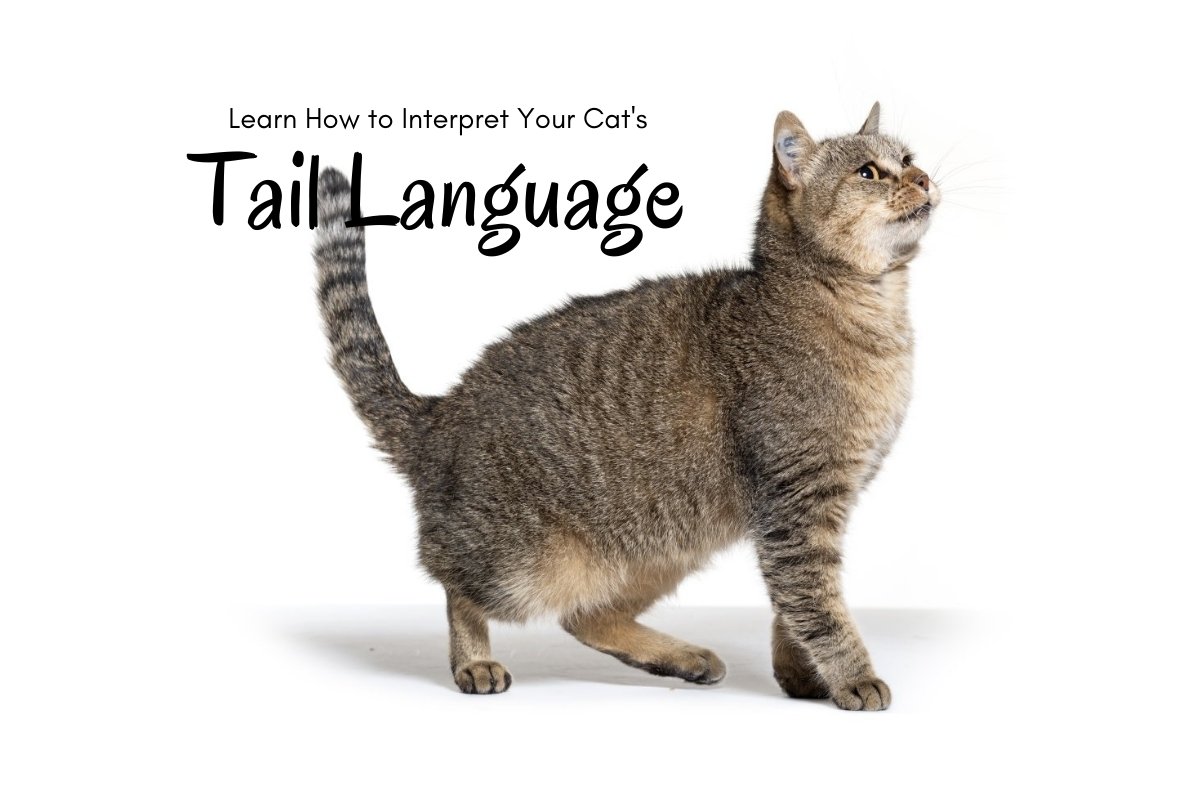
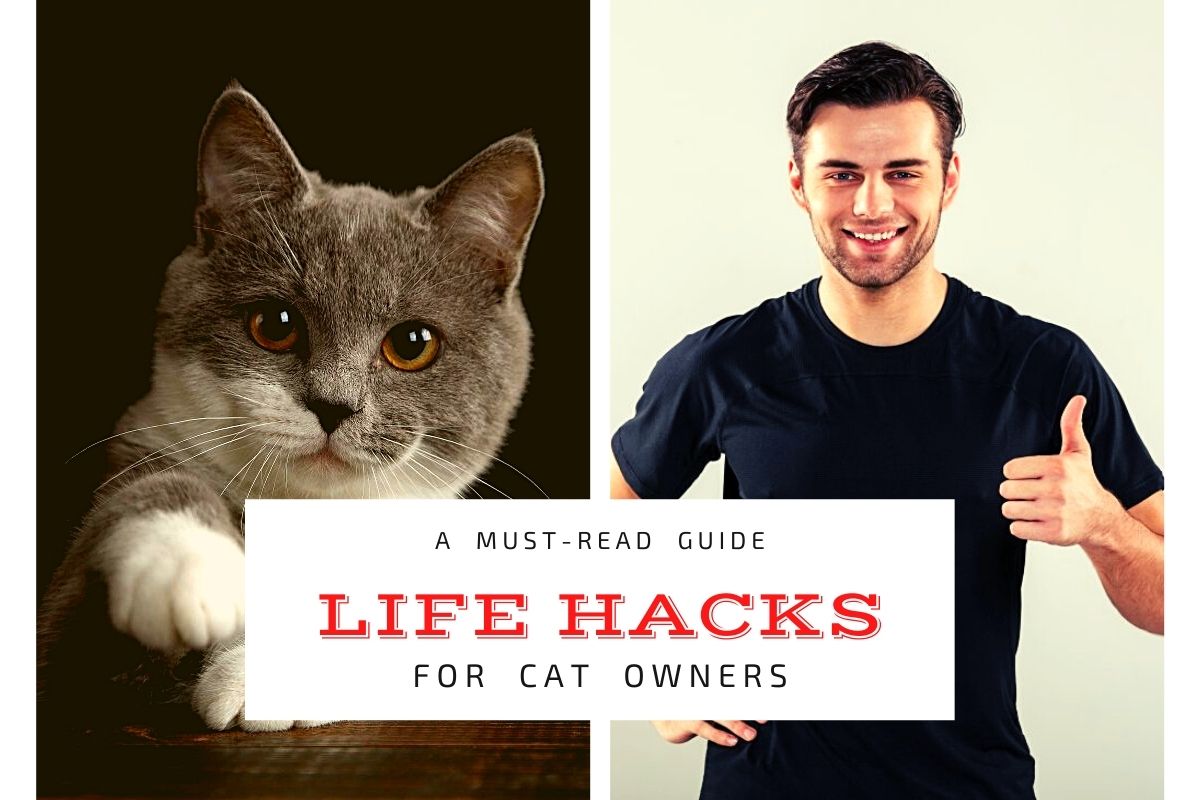

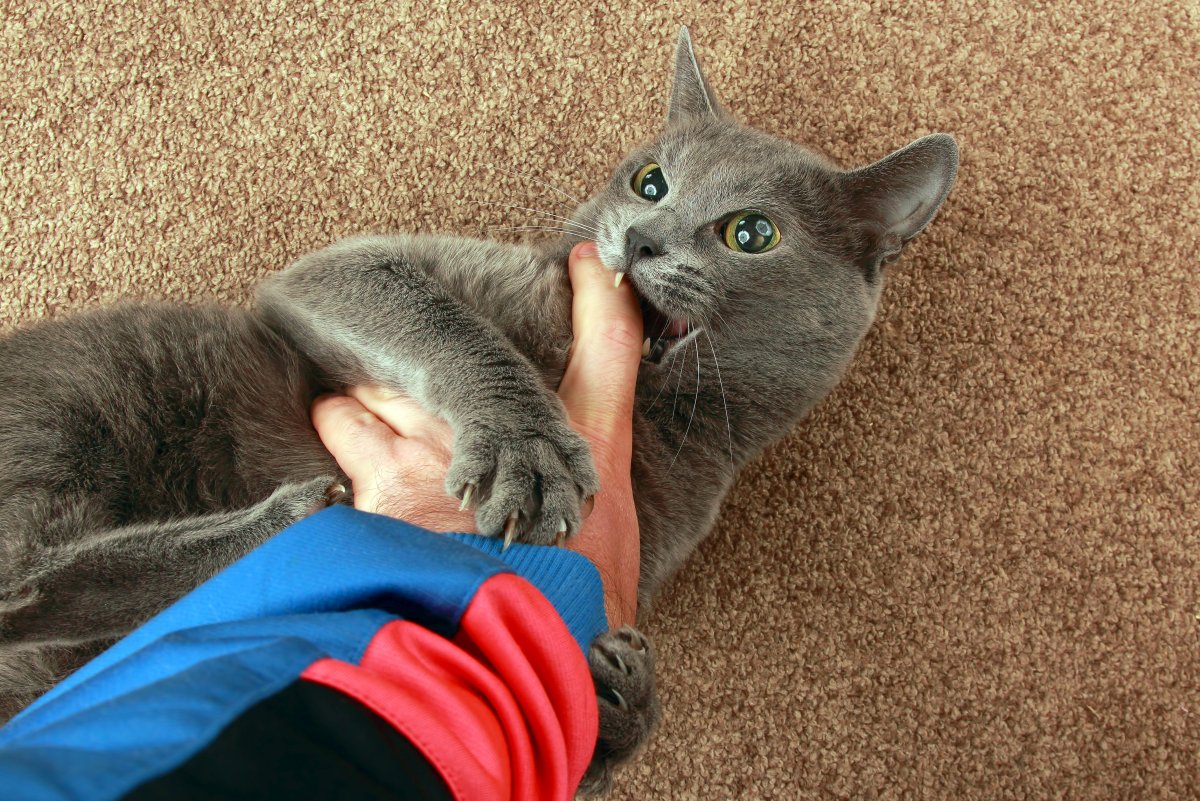
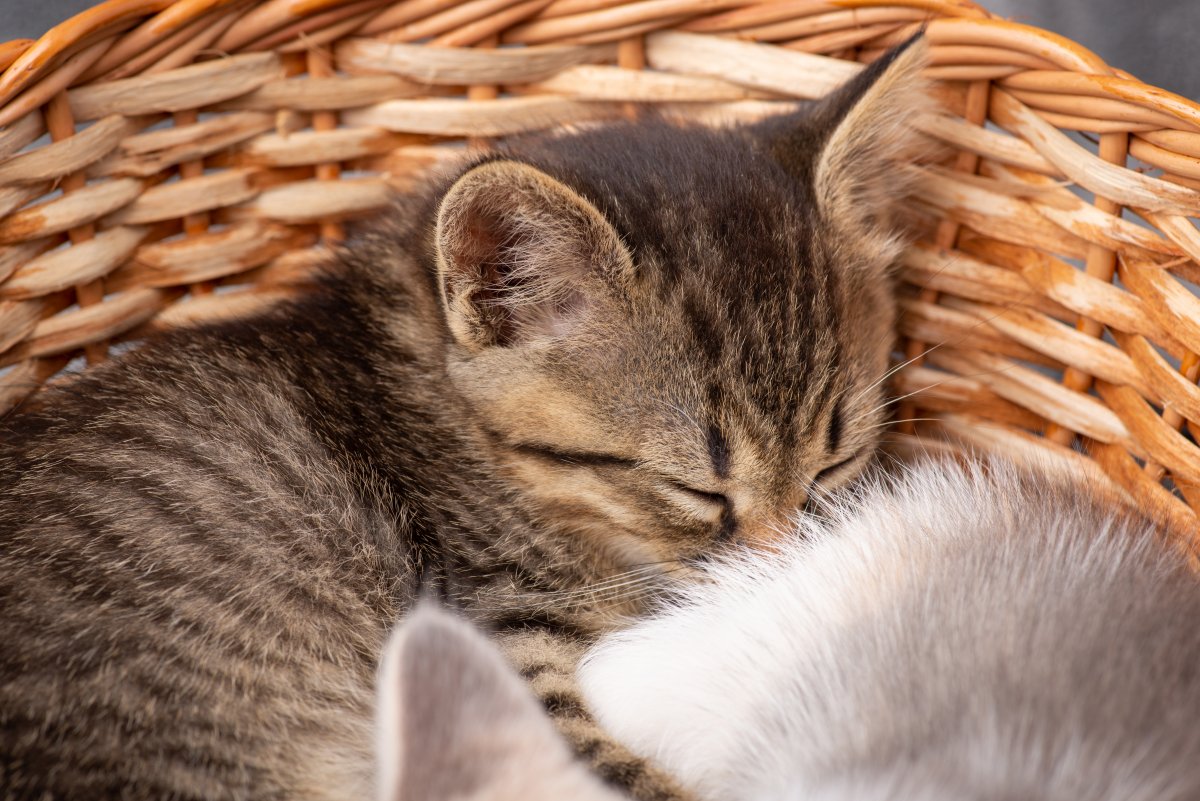
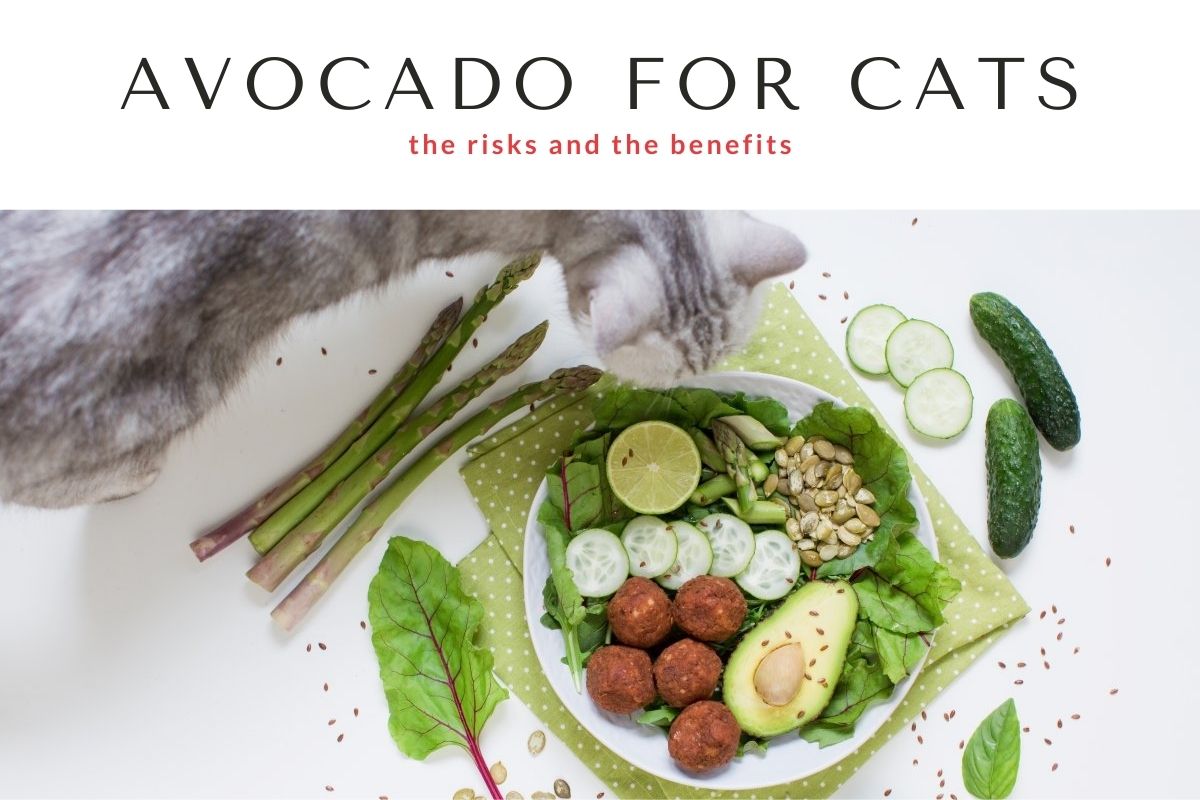
5 comments